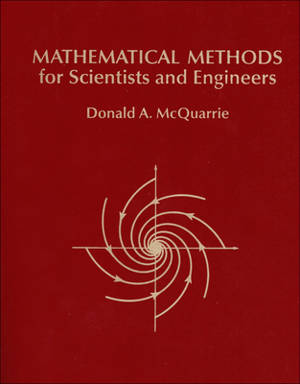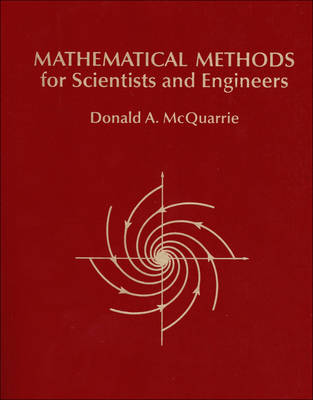
- Afhalen na 1 uur in een winkel met voorraad
- Gratis thuislevering in België vanaf € 30
- Ruim aanbod met 7 miljoen producten
- Afhalen na 1 uur in een winkel met voorraad
- Gratis thuislevering in België vanaf € 30
- Ruim aanbod met 7 miljoen producten
Zoeken
€ 115,45
+ 230 punten
Omschrijving
Intended forupper-level undergraduate and graduate courses in chemistry, physics, math and engineering, this book will also become a must-have for the personal library of all advanced students in the physical sciences. McQuarrie has crafted yet another tour de force.
From best-selling author Donald McQuarrie comes his newest text, Mathematical Methods for Scientists and Engineers. Intended for upper-level undergraduate and graduate courses in chemistry, physics, math and engineering, this book will also become a must-have for the personal library of all advanced students in the physical sciences. Comprised of more than 2000 problems and 700 worked examples that detail every single step, this text is exceptionally well adapted for self study as well as for course use. Famous for his clear writing, careful pedagogy, and wonderful problems and examples, McQuarrie has crafted yet another tour de force. Download a sample chapter and see for yourself what this book has to offer.Artwork from this textbook and original animations by Mervin Hanson may be viewed and downloaded by adopting professors and their students. Figures that display the time evolution of an equation and the result of the variation of a parameter have been rendered as QuickTime movies. These movies can be displayed as animations or by using the single-step feature of QuickTime.All browsers are welcome to preview the art and animations from Chapter 16 on Partial Differential Equations.A detailed Solutions Manual is available, and art may be downloaded by adopting professors.
From best-selling author Donald McQuarrie comes his newest text, Mathematical Methods for Scientists and Engineers. Intended for upper-level undergraduate and graduate courses in chemistry, physics, math and engineering, this book will also become a must-have for the personal library of all advanced students in the physical sciences. Comprised of more than 2000 problems and 700 worked examples that detail every single step, this text is exceptionally well adapted for self study as well as for course use. Famous for his clear writing, careful pedagogy, and wonderful problems and examples, McQuarrie has crafted yet another tour de force. Download a sample chapter and see for yourself what this book has to offer.Artwork from this textbook and original animations by Mervin Hanson may be viewed and downloaded by adopting professors and their students. Figures that display the time evolution of an equation and the result of the variation of a parameter have been rendered as QuickTime movies. These movies can be displayed as animations or by using the single-step feature of QuickTime.All browsers are welcome to preview the art and animations from Chapter 16 on Partial Differential Equations.A detailed Solutions Manual is available, and art may be downloaded by adopting professors.
Specificaties
Betrokkenen
- Auteur(s):
- Uitgeverij:
Inhoud
- Aantal bladzijden:
- 1176
- Taal:
- Engels
Eigenschappen
- Productcode (EAN):
- 9781891389290
- Verschijningsdatum:
- 23/06/2003
- Uitvoering:
- Paperback
- Formaat:
- Trade paperback (VS)
- Afmetingen:
- 196 mm x 239 mm
- Gewicht:
- 2154 g

Alleen bij Standaard Boekhandel
+ 230 punten op je klantenkaart van Standaard Boekhandel
Beoordelingen
We publiceren alleen reviews die voldoen aan de voorwaarden voor reviews. Bekijk onze voorwaarden voor reviews.










